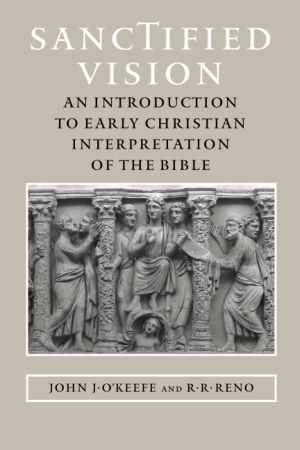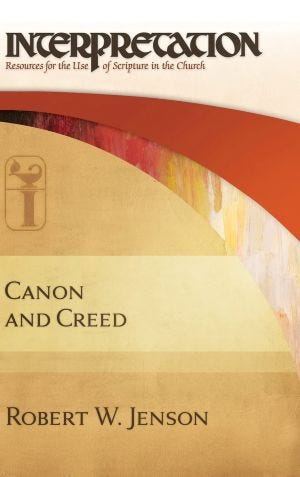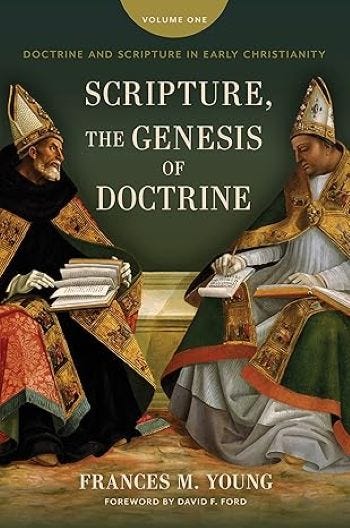Theological Interpretation of Scripture Matters—2
Premodern Precursors
In the wake of the Enlightenment, scientific exegesis, known to most of us as the historical-critical paradigm, colonized the world of biblical interpretation. It opened a yawning chasm between most professional biblical studies and the everyday interpretive practices characteristic of the church. Moreover, in the modern period, biblical scholarship and, indeed, the Bible itself, have grown increasingly distant from homiletics or constructive theology. Given its accredited status, legitimated by its longevity and authorized by powerful cultural forces associated with modernity, the historical-critical paradigm continues as standard operating procedure for many. As a result, persons engaged in discourse and practices at the interface of Scripture and theological reflection often find that they must mine the distant past for exemplars of the craft of theological interpretation.
Premodern Interpretation as Theological Interpretation
Among the reasons we turn to premodern interpretation, two are especially important.
First, for premodern interpreters, theological interpretation was pretty much a given, almost as if it were effortless. By way of contrast, people trained in departments of religious studies, schools of theology, or seminaries in the last 150 years tend to focus sharply on historical and grammatical questions, so they (we) typically have to relearn even how to ask questions of a theological sort. True, we might be able to describe, say, Paul’s theology of justification by faith, but this is not the same thing as engaging Paul’s letters prescriptively or learning theological reflection from Paul.
Consider Martin Luther’s (1483–1546) commentary on the Magnificat, Mary’s Song (Luke 1:46–55) (Martin Luther, “The Magnificat,” in Luther’s Works, vol. 21, The Sermon on the Mount (Sermons) and the Magnificat, ed. Jaroslav Pelikan [Saint Louis, MO: Concordia, 1956], 297–358).1 For the Reformer, theology and exegesis flow into and out of each other. (Luther adopts no linear hermeneutic: observation leading to interpretation leading to application, for example, or historical and literary insights leading to theological and ethical insights.)
One example: Luther addresses his exposition of Mary’s Song “to his Serene Highness, Prince John Frederick, Duke of Saxony, Landgrave of Thuringia, Margrave of Meissen, my Gracious Lord and Patron” (297). He observes the ease with which those who ascend to power, wealth, and honor come under the spell of “presumption and smugness”: they forget God and show no care for their subjects. Of such a person, Luther observes, “Being able to do wrong with impunity, he [sic] lets himself go and becomes a beast, does whatever he pleases, and is a ruler in name, but a monster in deed. … Since they need not fear men [sic], therefore, all rulers should fear God more than others do, learning to know Him and His works and walking diligently.” As an antidote to presumption and smugness, then, Luther offers Mary’s Song: “Now, in all of Scripture I do not know anything that serves such a purpose so well as this sacred hymn of the most blessed Mother of God, which ought indeed to be learned and kept in mind by all who would rule well and be helpful lords. … This pure virgin well deserves to be heard by a prince and lord, as she sings him her sacred, chaste, and salutary song” (298). Unsurprisingly, then, in Luther’s exposition, he finds occasion to address Prince Frederick directly, pressing the immediacy of Mary’s Song for the early-sixteenth century. Mary—who “is not puffed up, does not vaunt herself or proclaim with a loud voice that she is become the Mother of God” (329)—is at the center, undoubtedly in order to shape his patron’s attitudes and practices as a person of power, wealth, and honor.
Scripture and the Rules of Faith and Love
A second reason to consider carefully the work of our forebears has to do with the relationship between the church’s Rule of Faith and the Bible. Many of us imagine that the church’s doctrine is built and rests on the foundation of the Old and New Testaments. We argue from the Bible to doctrine. This is problematic, historically. Recall that the canon of Christian Scripture was not in place when the Rule of Faith was taking shape. The New Testament as a canonical collection was formed alongside and in relationship to these kerygmatic formulations, so that at the very least we can say that, historically, the Rule of Faith and the canon of Scripture took shape in a context of mutual influence. Indeed, one of the primary criteria by which these books (and not those) would comprise the New Testament was their coherence with the kerygma as this was articulated in the Rule of Faith.2
The relationship between Bible and Creed can be construed variously. In my view, (1) we do not use the Rule of Faith to predetermine the meaning of the Bible, or to read later doctrinal formulations back into the Bible. (2) Nor do we imagine that the Rule of Faith is the superstructure that has the Scriptures as its substructure. (3) And we should not imagine that the ecumenical creeds simply summarize the “stuff” of the Bible. Rather, as we learn from biblical theologians in the early centuries of the church, (4) the Rule of Faith captures the Bible’s overall order or structure, its “economy,” and faithful interpretation of Scripture expresses that order. Moreover, (5) theological interpretation of Scripture can inquire whether our readings of the Old and New Testaments lie within the parameters set by the Rule of Faith. The Bible might be read from numerous perspectives, but we say that readings of the Old and New Testaments that do not cohere with the Rule of Faith are not Christian readings of the Scriptures.
In a related move, Augustine (354–430) claimed that Scripture should be read always according to the intent of the God who stands behind, speaks through, and authorizes the Scriptures. And this intent is clear: to form in its readers and hearers love of God and love of neighbor. Readers and hearers of Scripture practice Jesus’s commandment, which is nothing other than the old commandment (Deut 6:4–5; Lev 19:18): Love God, love neighbor. Through engagement with Scripture, God’s Spirit propels us along the path of learning, embodying, this double-love. Indeed, for Augustine, if our reading of Scripture does not form God’s people in the love of God and neighbor, then we have read wrongly and should begin again (On Christian Teaching 1.86)
Suggested Reading
O’Keefe, John J., and R. R. Reno. Sanctified Vision: An Introduction to Early Christian Interpretation of the Bible. Baltimore: The Johns Hopkins University Press, 2005. ISBN: 9780801880889. 156 pp.
Reading biblical interpretation in the early centuries can seem like a visit to an alien country—or, indeed, an alien planet. Having a steady guide who can identify the key landmarks and provide some background is indispensable, then. This is that guide.
O’Keefe and Reno address why modern readers find patristic exegesis difficult, given our sometimes radically different approaches to interpretation. They urge that these early theologians read the Bible as a unified witness to Jesus Christ, unlike moderns who view it as a diverse collection of documents. This unified vision enabled them to develop coherent interpretive strategies despite their sometimes appearing whimsical to us. Their readings were disciplined and plain, making clear their interpretive presuppositions about the divine economy underlying the unity of Scripture.
This, then, is an excellent starting point for working with this rich body of early Christian literature.
Robert W. Jenson, Canon and Creed, Interpretation: Resources for the Use of Scripture in the Church. Louisville: Westminster John Knox, 2010. ISBN: 9780664230548. 152 pp.
Canon and Creed addresses historically and theologically the basic question of how the church understands the relationship between Scripture and creedal formulations. Jenson shows that the adoption of the scriptural canon and the creation of the Creed comprised a circular, mutually informing process.
Jenson structures his book in three parts: central concerns, which treats the notions of canon, Rule of Faith, creed, and the relationship among the testaments; extensions, which explores the canonical text, dogma, and the episcopacy; and creed and scriptural exegesis. This last section is of special interest, both because Jenson imagines the creed as a “critical theory” for biblical interpretation and because he provides some exegetical/homiletical examples of what theological interpretation looks like.
Young, Frances M. Doctrine and Scripture in Early Christianity. 2 vols. Grand Rapids: Eerdmans, 2023–2024. Vol. 1: Scripture, the Genesis of Doctrine; ISBN: 9780802882981; 308 pp. Vol. 2: Scripture in Doctrinal Dispute; ISBN: 978-0802882998; 384 pp.
Young challenges the common working assumption that between Scripture and doctrine lies an unbridgeable chasm. Her favorite way of describing their relationship is in terms of coinherence. Indeed, in the formative years of early Christian thought, she shows that Scripture and doctrine enjoyed an organic relationship. Accordingly, contra the claims of the historical-critical paradigm, reading Scripture doctrinally is not an anachronism. Rather, to read Scripture Christianly is to read it doctrinally.
The question, then, is not so much: How do we get from Scripture to theology? We ask, instead: What was the role of Scripture in doctrinal dispute—concerning the nature of God the creator, the nature of the Trinity, and the two natures of Christ?
Bonus Recommendations
Here are some works that provide further, helpful discussion of the importance of premodern interpretation of the Bible.
Paul B. Decock, “On the Value of Pre-Modern Interpretation of Scripture for Contemporary Biblical Studies,” Neotestamentica 39, no. 1 (2005): 57–74. (Public access: https://www.researchgate.net/publication/228746977_On_the_value_of_pre-modern_interpretation_of_Scripture_for_contemporary_biblical_studies)
David C. Steinmetz, “The Superiority of Pre-Critical Exegesis,” Theology Today 37, no. 1 (1980): 27–38. https://doi.org/10.1177/004057368003700103
Here, I am adapting material from Joel B. Green, Discovering Luke: Content, Interpretation, Reception, Discovering Biblical Texts (Grand Rapids: Eerdmans, 2021), 29–32.
Here, I am adapting material from Joel B. Green, Practicing Theological Interpretation: Engaging Texts for Faith and Formation, Theological Explorations for the Church Catholic (Grand Rapids: Baker Academic, 2012), 72–80.




